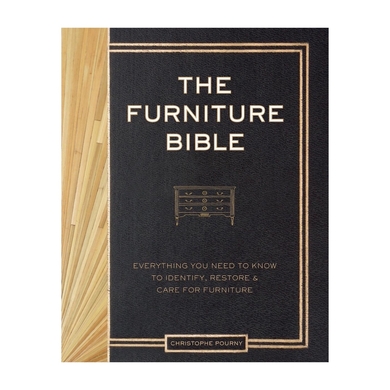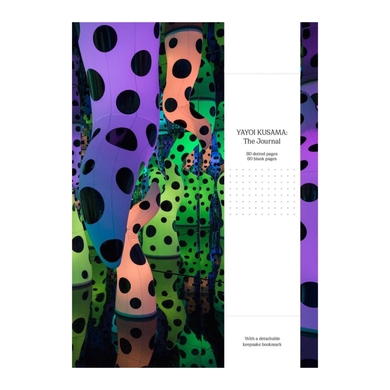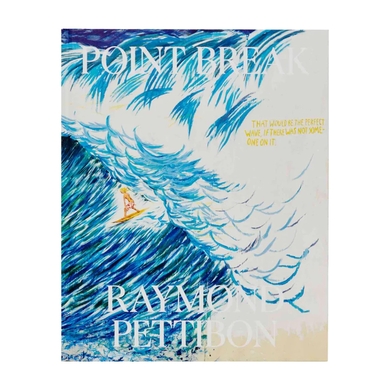- Publisher: David Zwirner Books
- Binding: Softcover, 27 books
- Pages: 3,162
- Reproductions: 325
- ISBN: 9781644231425
- Status: Available
Any Day Now: Toward a Black Aesthetic
by Larry Neal
A collection of seminal essays on the arts by Larry Neal, a founder of the Black Arts Movement
My Friend Van Gogh
By Émile Bernard
An intimate testament to the power of friendship between two creative forces
Blue
by Derek Jarman
Derek Jarman’s Blue weaves a sensory tapestry that serves as both a political call to action and a meditation on illness, dying, and love.
Mad about Painting
by Katsushika HokusaiMad about Painting collects beautiful new translations of Hokusai’s painting tutorials and related essays written by the artist and his peers—a selection made available in English for the first time.
Kandinsky: Incarnating Beauty
by Alexandre Kojève
A compilation of esoteric musings, Kandinsky: Incarnating Beauty explores Alexandre Kojève’s philosophical approach to the relationship between art and beauty.
Strange Impressions
by Romaine Brooks
Selections from Romaine Brooks’s unpublished memoir No Pleasant Memories expose the psyche and practice of this underrecognized queer, female artist.
Something Close to Music: Late Art Writings, Poems, and Playlists
by John Ashbery
An intimate and unique collection of the work of John Ashbery—a prolific poet and art critic—pairing poetry and art writings with playlists of music from his personal library.
Dix Portraits
by Gertrude Stein
Originally published in 1930 in an edition of one hundred copies, Gertrude Stein’s Dix Portraits pairs her singular literary style with original lithographs by Pablo Picasso and other artists in Stein’s circle to create an exceptional artist book exploring written and visual portraiture.
Oh, to Be a Painter!
by Virginia Woolf
The twentieth volume in the renowned series, this collection of Virginia Woolf’s writings on the visual arts offers a whole new perspective on the revolutionary author.
The Salon of 1846
by Charles Baudelaire
In his introduction to Charles Baudelaire’s Salon of 1846, the renowned art historian Michael Fried presents a new take on the French poet and critic’s ideas on art, criticism, romanticism, and the paintings of Delacroix.
Photography and Belief
by David Levi Strauss
In this exploration of contemporary photography, David Levi Strauss questions the concept that “seeing is believing.”
The Cathedral Is Dying
by Auguste Rodin
Master sculptor Auguste Rodin’s illuminating writings on cathedrals in France are especially relevant and significant following the recent fire at Notre Dame.
Two Cities
by Cynthia Zarin
From acclaimed poet and New Yorker writer Cynthia Zarin comes a deeply personal meditation on two cities, Venice and Rome—each a work of art, both a monument to the past—and on how love and loss shape places and spaces.
A Balthus Notebook
by Guy Davenport
In his 1989 book on Balthus—the storied and controversial artist who worked in Paris throughout the twentieth century—Guy Davenport gives one of the most nuanced, literary, and compelling readings of the work of this master. Reading it today highlights the change in perspectives on sexuality and nudity in art in the past thirty years.
Thrust: A Spasmodic Pictorial History of the Codpiece in Art
by Michael Glover
A laugh-out-loud visual history of the strangest piece of men’s clothing ever created: the codpiece.
Visions and Ecstasies: Selected Essays
by H.D.
H.D.’s writing continues to inspire generations of readers. Bringing together a number of never-before-published essays, this new collection of H.D.’s writings introduces her compelling perspectives on art, myth, and the creative process.
The Critic as Artist
by Oscar Wilde
In The Critic as Artist, arguably the most complete exploration of his aesthetic thinking, and certainly the most entertaining, Oscar Wilde harnesses his famous wit to demolish the supposed boundary between art and criticism.
28 Paradises
by Patrick Modiano and Dominique Zehrfuss
Published in English for the first time, 28 Paradises is the marriage of prose and painting by Nobel-prize winning author Patrick Modiano and his partner, the illustrator Dominique Zehrfuss.
On Contemporary Art
by Cesar Aira
Translated into English for the first time, On Contemporary Art, a speech by the renowned novelist César Aira, was delivered at a 2010 colloquium in Madrid dedicated to bridging the gap between writing and the visual arts.
Giotto and His Works in Padua
by John Ruskin
The Arena Chapel in Padua was completed in 1303; Giotto, then considered the preeminent painter in Italy, was commissioned to paint it in 1306. The resulting fresco cycle, detailing the history, birth, life, and death of Christ, ranks among the greatest artworks ever created.
The Psychology of an Art Writer
by Vernon Lee
An openly lesbian, feminist writer, Vernon Lee—a pseudonym of Violet Paget—is the most important female aesthetician to come out of nineteenth century England. This volume reintroduces Lee’s writing through the first-ever English publication of “Psychology of an Art Writer” (1903) along with selections from her groundbreaking “Gallery Diaries” (1901–1904), breathtaking accounts of Lee’s own experiences with the great paintings and sculptures she traveled to see.
Summoning Pearl Harbor
by Alexander NemerovSummoning Pearl Harbor is a mesmerizing display of linguistic force that redefines remembering. How do words make the past appear? In what way does the historian summon bygone events? What is this kind of remembering, and for whom do we recall the dead, or the past?
Letters to a Young Painter
by Rainer Maria Rilke
Never before translated into English, Rainer Maria Rilke’s fascinating Letters to a Young Painter, written toward the end of his life between 1920 and 1926, is a surprising companion to his infamous Letters to a Young Poet, earlier correspondence from 1902 to 1908. While the latter has become a global phenomenon, with millions of copies sold in many different languages, the present volume has been largely overlooked.
Pissing Figures 1280-2014
by Jean-Claude Lebensztejn
Jean-Claude Lebensztejn’s history of the urinating figure in art is at once a scholarly inquiry into an important visual motif, and a ribald statement on transgression and limits in works of art in general. Lebensztejn is one of France’s best-kept secrets. A world-class art historian who has lectured and taught at major universities in the United States, his work has remained almost entirely in French, his American audience limited to a small but dedicated group of cognoscenti.
Degas and His Model
by Alice Michel
There are many myths about the artist Edgar Degas—from Degas the misanthrope to Degas the deviant, to Degas the obsessive. But there is no single text that better stokes the fire than Degas and His Model, a short memoir published by Alice Michel, who purportedly modeled for Degas.
Chardin and Rembrandt
by Marcel Proust
Long overlooked in Proust’s posthumously published writings, Chardin and Rembrandt, written when he was only twenty-four years old, not only reemphasizes the importance of visual art to his development, but contains the seeds of his later work.
Ramblings of a Wannabe Painter
by Paul Gauguin
“Criticism is our censorship …” So begins one of the greatest invectives against criticism ever written by an artist. Paul Gauguin wrote “Racontars de rapin” only months before he died in 1903, but the essay remained unpublished until 1951. Through discussions of numerous artists, both his contemporaries and predecessors, Gauguin unpacks what he viewed as the mistakes and misjudgments behind much of art criticism, revealing not only how wrong critics’ interpretations have been, but also what it would mean to approach art properly—to really look.






